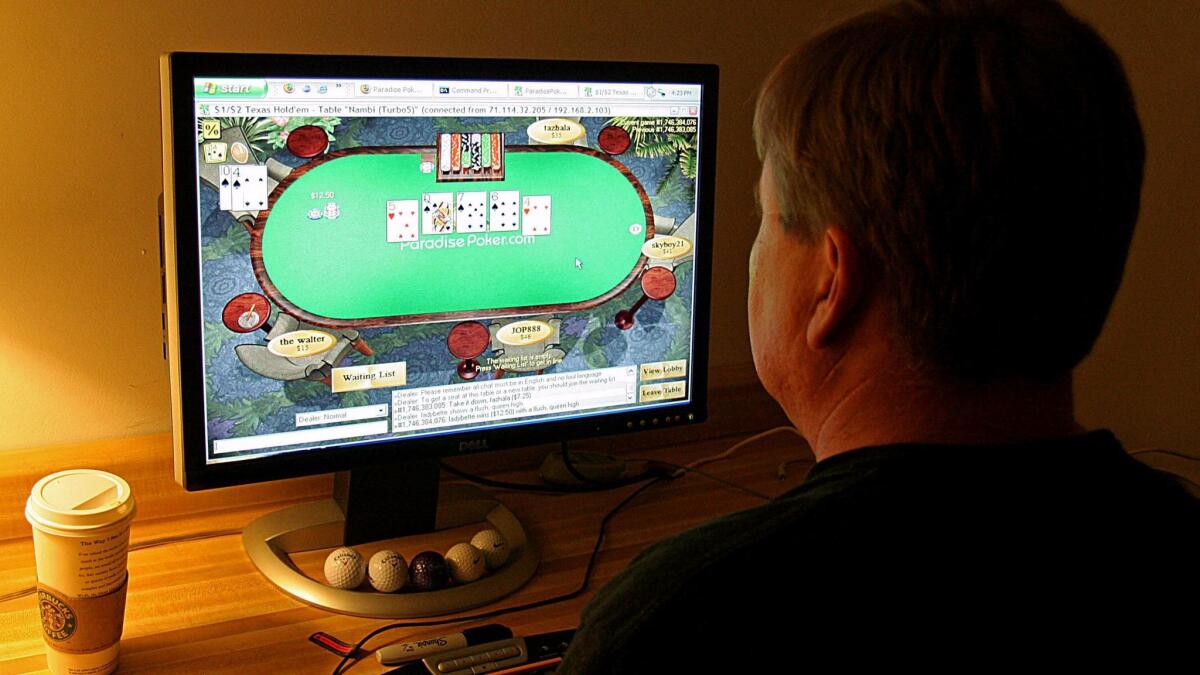13 surefire ways to tap into your creativity
Here in L.A., many a “creative” crafts vision boards, recites affirmations and generally begs and barters with the gods for inspiration and stick-to-itiveness — as still-undone projects nag at the do-it-tomorrow soul. Rather than letting your genius ideas languish another year, another decade, another lifetime, we asked creativity experts to share tips on how to actually complete your book, script, music composition, art or design project and transform your creative dreams into a reality.
“For really creative people … your biggest enemy is procrastination,” says Tom Kelley, who with his brother, David Kelley, wrote the book “Creative Confidence: Unleashing the Creative Potential Within Us All.” He’s also a partner at the lauded design and innovation firm IDEO (it designed the original mouse for Apple) and speaks on creativity across the globe. The good news? You can fight back that tendency, with practice. “Nurture your own creativity. It’s the combination of the natural creative ability and also the courage to act and stamina to keep going on things.”
Related: How a harried L.A. mom got her first book published — at age 47 »
Here are 13 ideas to help you do just that:
1. Figure out when you’re at your best
“A really simple, super-tactical thing people can do,” Kelley says, “is just kind of turn up the creative yield on ideas that are already starting to form in their minds, right? When do you have your best ideas? So if you’re a little bit mindful, people find that, ‘Oh yeah, there’s a time when I’m most creative, it’s … when I’m on a long commute and my mind is wandering,’ or if you find, like me, it’s the first five minutes of the morning. Then don’t jump out of bed or go back to sleep when the alarm goes off, stay in that kind of creative mindset for the first five minutes until the snooze alarm rings. So you find your time, and then you protect it, and then capture your ideas that occur during those times.”
“A really simple, super-tactical thing people can do,” Kelley says, “is just kind of turn up the creative yield on ideas that are already starting to form in their minds, right? When do you have your best ideas? So if you’re a little bit mindful, people find that, ‘Oh yeah, there’s a time when I’m most creative, it’s … when I’m on a long commute and my mind is wandering,’ or if you find, like me, it’s the first five minutes of the morning. Then don’t jump out of bed or go back to sleep when the alarm goes off, stay in that kind of creative mindset for the first five minutes until the snooze alarm rings. So you find your time, and then you protect it, and then capture your ideas that occur during those times.”
He suggests writing down good ideas immediately because you’ll most likely forget them. Kelley keeps two pads of paper at his bed at all times. “My brother, David, has a white board and marker in the shower,” Kelley says, adding people most commonly tell him the shower is their most creative idea space. “There is no email in the shower. There is nothing to engage your mind and so your mind gets to wander.”
It may also be a specific piece of music that helps your creativity flourish. “I wrote an entire book listening to ‘Brian Eno — Ambient 1: Music for Airports,’” says Kelley, who only listens to it when writing.
Once you know what gets your creative juices flowing, use that to your advantage.
“The great thing about that is it becomes Pavlovian. … It’s like, hey brain, remember what we do when this music plays?”
2. Find a “reverse mentor”

“Somebody who may or may not be 5, 10, 15, 20 years younger than you who is exposed to insight, trends or new ideas you might otherwise miss. The easiest way to do this is, for example, take them to lunch every second Thursday for the next six weeks. Explain that you want them to expand the horizon looking for stuff you should know about it. Whether it’s how to use WhatsAPP or a trend in the retail business or what people are talking about in the nightclubs of L.A.,” says Kelley. You may be wiser or have more education than this mentor, but you stand to learn even more. “You’ll be so much smarter, you’ll have so much more stimulus. … People tell me this really turns up their creativity.”
3. Change your routine

Kelley uses taking a “gap year” before college as an example, when young adults get to learn and experiment with new things beyond book learning. Kelley says someone already mid-career usually can’t quite afford or doesn’t want to do a whole gap year, “so you can designate a gap week or a gap month where you change up your routine. You start going to different restaurants, hanging out in different neighborhoods, maybe you meet different people, keep different hours, maybe take an online course during that month. … Try living in a different city for a little while. I actually did this last year and it totally changed my life. … It’s that old thing of a certain form of madness is doing the same thing over and over again and expecting different results.”
4. Battle procrastination. Epically.

“I found tremendous help from a book called ‘The War of Art: Break Through the Blocks and Win Your Inner Creative Battles’ by Steven Pressfield. It recharacterizes procrastination. … Procrastination sounds like a personality flaw, but when a person recharacterizes procrastination into capital-R resistance — a force for evil in the world and it is your job to overcome resistance, rather than being weak — resistance is a call for me to be strong, a call to be a fighter,” says Kelley. “If I am a writer I am going to write. I’m going to judge it later.” (He also recommends “Creativity: The Psychology of Discovery and Invention” by Mihály Csikszentmihály.)
5. Try walking, especially in nature

Daniel L. Schwartz, dean of Stanford University’s Graduate School of Education, says gentle physical activity, such as walking, softens the filters that block “crazy, but sometimes creative, ideas from coming to the surface” and may also put people in a “golden spot” of increased intellectual vitality. Other simple, familiar activities may also trigger a creative flow.
6. Relax constraints

“I was working with a spirits company recently,” Kelley said, “and I said, ‘Try to imagine you’re a brand new 22-year-old employee in your company. It’s 10 years from now, which means you can relax technology constraints, and now imagine the most innovative bar in Los Angeles in the summer of, let’s say 2026.’ Wow, with the distance of time and age they came up with amazing ideas. It’s about getting mental distance from the problem, relaxing constraint — it’s not about you anymore, it’s not about the present. When you get people out of their heads, out of their normal thought patterns, it unlocks more creativity.”
7. Embrace diverse perspectives

“I wrote a whole book about this, ‘The Ten Faces of Innovation,’ ” Kelley says. “One secret ingredient for innovation in a group setting is actually respecting the other disciplines and teaming up with them well. Not thinking, ‘My discipline is the most important thing.’ … If I say, ‘Look, I’m really good at what I do, but what I do has a greater chance of succeeding if I team up with you,’ then the real collaboration starts happening. There’s a lot of good in that.”
8. Improve your tolerance for failure
“The truth is that we’ve all got ideas,” says Scott Belsky, author of “Making Ideas Happen: Overcoming the Obstacles Between Vision and Reality.” “We seldom feel welcome to take risk and experiment with the ideas we come up with. You must put something on the line and be willing to stomach incremental setbacks to push your ideas forward.”
9. Minimize “reactionary workflow”

“In the era of email, Facebook, Twitter and a dozen other sources of flowing information — coupled with the devices we carry around with us — we are liable to spend all day, every day reacting to what comes into us rather than being proactive in what matters most to us,” says Belsky. “I call this the era of ‘reactionary workflow’ because we can easily react 100% of the time and never make a dent in our long-term goals. … It’s critical that we force ourselves to unplug more often and focus on the long term, the list of two, three things we’re trying to do for our business and in our lives over time.”
10. Stop ‘selfie stalking’

“We spend too much time obsessing over what the world is saying about us. Whether it is checking your site’s traffic, your number of followers on social media or your bank account, these small repetitive actions don’t help you make ideas happen. They just help you feel safe,” Belsky says . “‘Insecurity work’ is stuff we do that (1) has no intended outcome, (2) does not move the ball forward in any way and (3) is quick enough that you can do it multiple times a day without realizing. … Try restricting all insecurity work to a specified 30 minutes every day.”
11. Get influential
“Nothing is completely original. All creative work builds on what came before,” says Austin Kleon, author of “Steal Like an Artist.” “So run toward influence instead of away from it: Read tons of books, go to museums, concerts and movies, take long walks, etc. Be always on the lookout for inspiration and carry a notebook with you wherever you go so you never lose an idea.”
12. Commit to a daily creativity practice, no matter how small
“Find a special distraction-free place and go there at the same time every day. Set a timer, let your mind go, and do your thing,” says Kleon. “A page a day doesn’t seem like much, but stick with it for a year, and you have 365 pages, enough for a book. Little bits of effort add up over time.”
13. Show your work

“Don’t wait until you have a perfect finished product to put your ideas out into the world,” says Kleon. “Start a blog, a newsletter or a social media account and start sharing your influences, works-in-progress and things that you’re learning. When you share things you love, you find a community of people who love those things too.”
READ ON!
Why midnight snacking is the worst
7 reasons why you can’t lose the weight
Actress Sofia Vergara’s secret? Lifting weights



